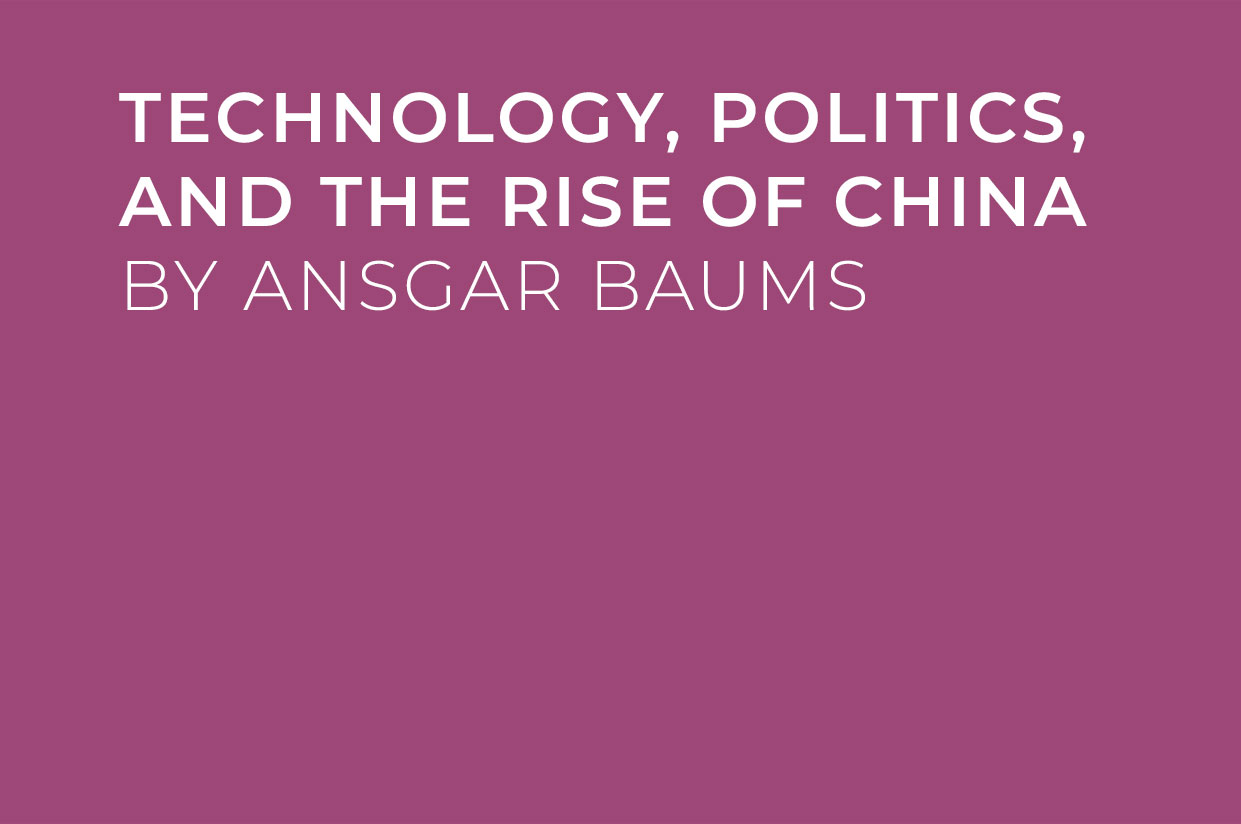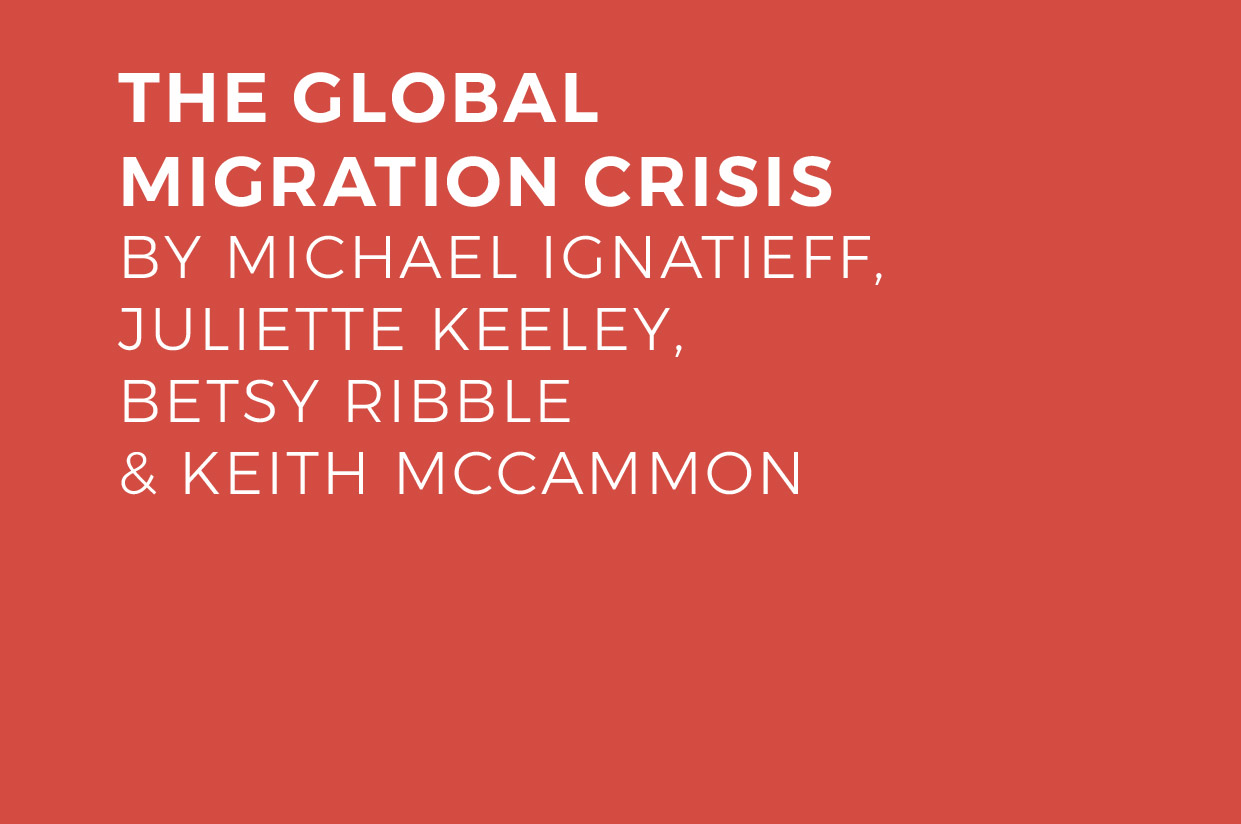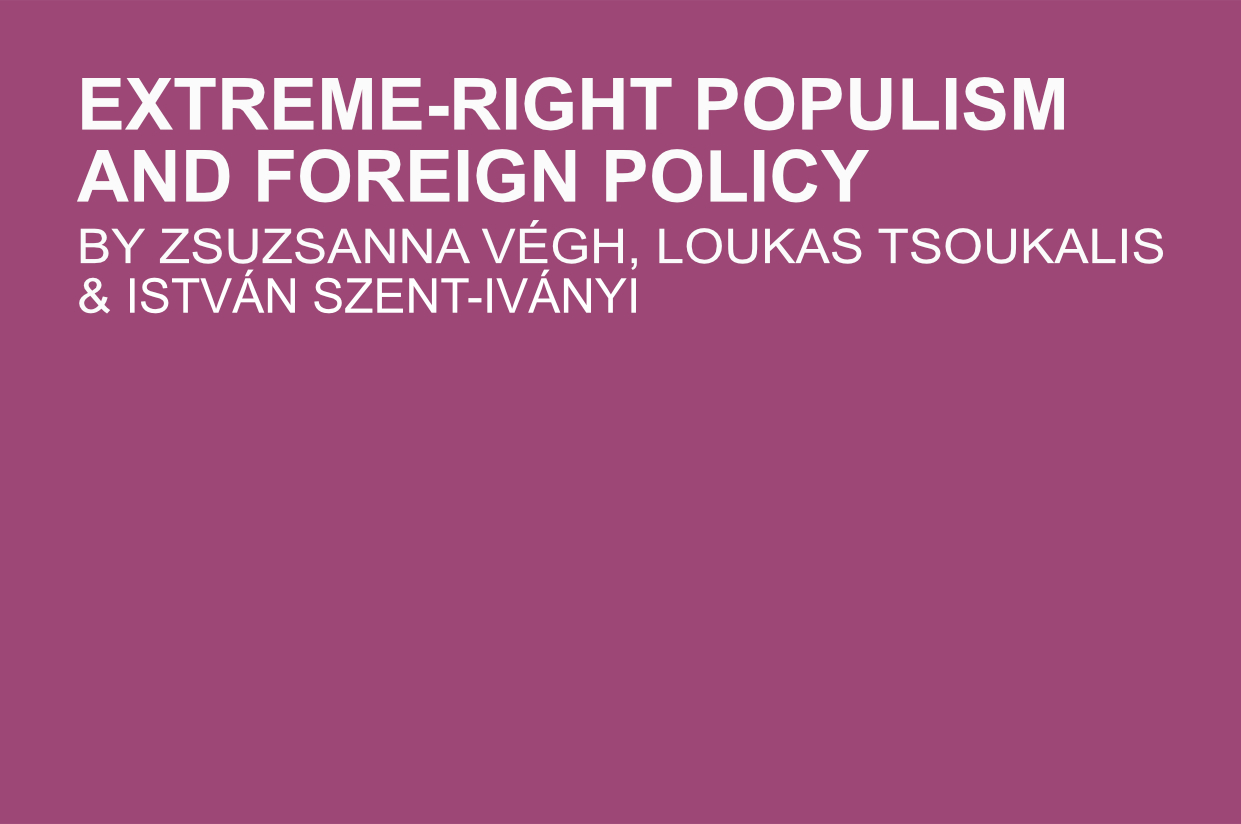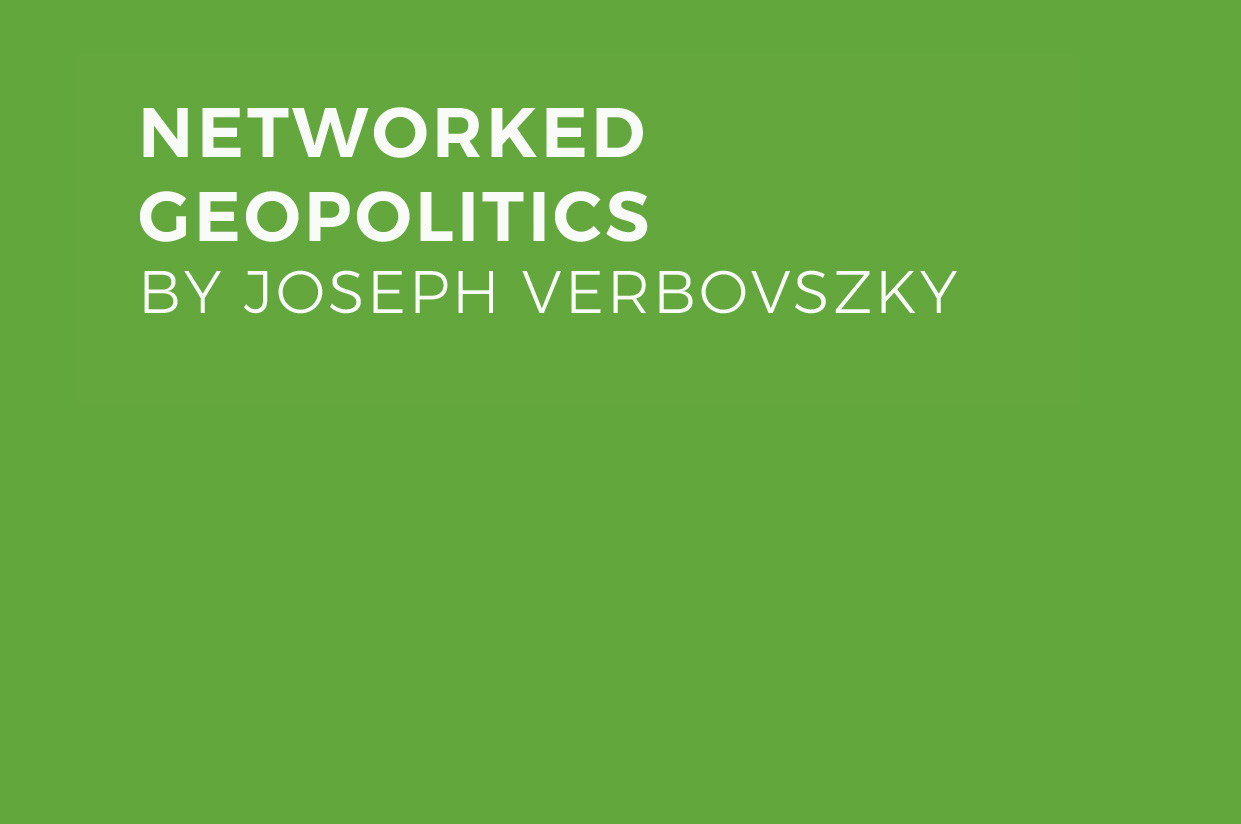
Technology, Politics, and the Rise of China
When technology replaces empires
By Ansgar Baums
The relationship between technology and geopolitics remains largely ignored. Technology is barely covered by international relations theory, except for a rather narrow focus on military capabilities—“missile counting,” for example, was once an important feature of Cold War science.
Alas, the rise of IT as a new general-purpose technology has not really changed the picture. This may not be a big surprise, given the reluctance of digital-economy representatives to engage in politics—the distance between Silicon Valley and Washington, DC, seems to be bigger than ever.
But a picture painted of neatly divided geopolitical and technological spheres misses the fact that technology and geopolitics have always been closely connected, influencing each other profoundly; history provides plenty examples. For one, the abandonment of colonial empires after World War II had many causes, but it seems inconceivable that Great Britain or the United States would have abandoned their possessions in Southeast Asia if natural rubber had been as important in 1945 as it was in 1935. In 1935, natural rubber was vital for the defense industry; ten years later, synthetics made “rubber empires” redundant. Another example: a mere 120 years ago, top military brass cared a lot about bird shit. As the main source of ammonia, guano was key to food security in fast-growing nations. Empires were literally ready to go to war over guano islands. And then along came a man named Fritz Haber, who developed a synthetic production process for ammonia, removing Guano islands from the “Let’s go to war over this” list forever. Or, take a more recent example: many of the problems in the Middle East have been assigned to the US dominance in the region, triggered by that unquenchable thirst for oil. Or is it? Technological progress has triggered a fracking boom in the US, basically taking US demand for oil off the global energy markets. Geopolitical planners are now more concerned about lack of interest in the US to engage in the Middle East rather than the opposite.
In short, geopolitics and technology influence each other. In extreme cases, technology replaces empires. If we want to make sense of where the world will go in the next decade, we need to develop a better framework to incorporate technology into geopolitical thinking – especially regarding the “general purpose technology” of our time: IT.
The rise of China and the end of Global IT?
If the hypothesis of a direct influence of geopolitical order on the structure of the IT stack is true, we should expect an immediate effect of the current rise of China on the IT stack—namely, a bifurcation of IT technologies that would reflect a new bipolar world order.
This is exactly what is happening right now. As the Chinese government made it abundantly (and transparently) clear in its “Made in China 2025” plan, “global IT” looks a lot like “American IT” to the Chinese government. If there was any additional proof necessary, the recent conflicts about ZTE, Micron, or Huawei confirmed the Chinese leadership that reliance on semiconductors or operating systems designed by US companies is risky, as it creates pressure points that could be leveraged against China. Today, China is by far the biggest exporter of IT hardware—but also the biggest importer of US-designed semiconductors. What would you do if you were the CEO of a Chinese IT company? Heavily invest in resilience and create alternatives to this dangerous single-sourcing, for sure.
So how to split an IT stack? To start with: influence standards. It is worthwhile reflecting that the harmonization of technology standards was a core pillar of US international policies after 1945, as it enabled a truly global economy to function seamlessly. China has been one of the main beneficiaries of a globally integrated economy, rising from dire poverty to a middle-class society by leveraging global supply-chains. It is therefore not conceivable that China would pursue an actual split by enforcing incompatible national standards, but rather steer international norms into the “right” direction, reflecting the interests and strengths of Chinese IT.
China has been one of the main beneficiaries of a globally integrated economy, rising from dire poverty to a middle-class society by leveraging global supply-chains. It is therefore not conceivable that China would pursue an actual split by enforcing incompatible national standards, but rather steer international norms into the “right” direction, reflecting the interests and strengths of Chinese IT.
On a second level, China pursues an agenda of technological sovereignty for IT core components. “Made in China” systematically identifies IT components and technologies that could be considered as the “commanding heights” of the economy of the future: AI, quantum computing, semiconductors, battery technology, among others. For each of these technologies, specific quantitative national and global targets have been set. Few doubt that China will pursue these goals with the usual determination and willingness to learn quickly from mistakes.
On a third level, regulatory tools are employed to deny competing technologies market access. This is most effectively done by establishing non-tariff barriers (NTBs) in disguise of cybersecurity and data regulation. China’s Cybersecurity Law (CSL) has become a major obstacle to compete in many market segments in China, mainly because nebulous terms like “secure and reliable IT” are specified by technical bodies which are exclusively accessible for Chinese-owned companies.
The result of such measures is a rather rapid development towards two distinct IT stacks—from the chip level up to applications and services. What does this mean in the long run? First and foremost, it is important to highlight that two distinct IT stacks are not the same as a complete decoupling of two economies and a break-up of global value chains. This is clearly not in the interest of the Chinese government: once again, China has benefited immensely from an integration in a seamless global trade system—a radical break is therefore very unlikely.
The goal is not to decouple China from global markets but to minimize exposure to pressure points. We should therefore expect bridging technologies between the stacks that would enable ongoing participation in a global economy for the time being, but that would also allow pursuit of a geopolitical strategy without being forced to comply to US demands. This follows a rather classical process of equilibration in international relations theory. Once such a state of resilience is achieved and pressure points are resolved, one might hope for a modus vivendi that would ensure a seamless interaction between those distinct IT stacks.
The European perspective: What kind of order?
From a European perspective, Robert Kagan’s recent observation, in The Jungle Grows
Back, sounds almost menacing: “World order is one of those things you don’t think about until it’s gone.” While the old world order is not completely gone yet, the cracks are too big to ignore. For those in charge of designing a new world order that would peacefully accommodate the rise of China, busy times lie ahead. Corporations in Europe and beyond will find themselves in the middle of such geopolitical redesign efforts—often with a very immediate and even critical impact on their business. Managing such a volatile and complex environment requires a new approach to corporate government relations strategies, which so far have focused mostly on regulation in a rather stable geopolitical environment. Corporations will need to incorporate a geo-technology strategy in their long-term planning.
For those in charge of designing a new world order that would peacefully accommodate the rise of China, busy times lie ahead. Corporations in Europe and beyond will find themselves in the middle of such geopolitical redesign efforts—often with a very immediate and even critical impact on their business.
While it seems clear that a bipolarization of the world order is imminent, the future role of Europe remains unclear. The alienation between US and European elites is profound, polls show a growing distrust especially on the European side, and a growing support for closer relationships between Europe and China or Russia. The idea of establishing Europe as a neutral middleman between competing world powers has a long history by itself. Recent calls for more European technological sovereignty build on this narrative. Such a positioning is especially tempting, as it can be combined with a slightly presumptuous idea of occupying the moral high-ground.
But the idea of a neutral Europe seems to be as unrealistic today as it was in 1945. Neither Europe nor the EU are geopolitical players as such; they lack coherence, planning, and military weight. On a technological level, Europe is fully integrated in the Western IT stack—this is especially relevant for IT-applying companies in European key sectors such as the automotive industry. It seems to be unlikely that critical elements of the IT stack could be built in Europe any time soon.
At the same time, China has gained influence in Europe by skillfully exploiting the soft underbelly of the EU and investing in infrastructures in Eastern and Southern Europe. The “17+1” format has even institutionalized the growing dependencies. While leaders such as Chancellor Angela Merkel have rung the alarm bells on 17+1, the EU lacks a clear response strategy. Furthermore, China already holds considerable leverage over European key sectors, including automotive: no growth in China equals no growth generally in a rather sluggish global growth environment.
Strategic options are therefore more limited than usually claimed by the adherents of a middleman position. Yet what can be done is very much in line with long-understood priorities of the EU on the internal development of European unity. Three areas are key:
- Strengthen coherence: Engagements of EU member states with China and the US would need to follow common rules. Participation rules in China’s Belt and Road Initiative should be defined and enforced by the EU. It remains a mystery why such an important topic has been largely absent from the current EU election campaigns.
- Build leverage: Europe’s biggest asset is the size of its internal market. The Single Market is no longer a policy option to foster economic growth in Europe, it is key to gain influence in an increasingly bipolar world. Neither US nor Chinese companies can ignore the second-biggest market in the world—for now, at least. Such economic interdependencies are not a guarantee for friendly relationships (as recent threats from the Trump administration against the EU have shown), but they are the best available insurance against bullying. This also provides, by the way, a fresh perspective on demographic change and the role of migration. The latter might ensure that Europe remains an important market and can shape global affairs accordingly.
- Focus on key components of the IT stack: From an IT stack perspective, a renewed focus on semiconductor capabilities is urgently needed. The chip industry has changed dramatically over the last twenty years, as newly specialized chips are partly replacing multi-purpose chips like the CPU. A new generation of specialized chips for artificial intelligence will change the landscape of semiconductors further. As the chip industry is a long-term business with learning curves that are not easily leapfrogged, Europe needs to embrace a much more long-term strategy, as well.
Promoting such an agenda would show that Europe has a will to shape its own destiny rather than only being at the receiving end of geopolitical change. “Strategic autonomy means, first and foremost,” wrote Benjamin Haddad and Alina Polyakova last year in Foreign Affairs, “a vision for Europe as an actor on the world stage capable of defending itself at home and pursuing its objectives abroad.” This conclusion remains important, even if it echoes George Kennan’s farsighted “Long Telegram,” from 1946: “Much depends on the health and vigor of our own society.”
Ansgar Baums is Head of HP’s Global Strategy Program. He provides advice and support to business leaders on political megatrends and macro-economic developments. Baums is a member of HPs Cybersecurity Management Review Council and publishes regularly on digital policy issues, e.g. Kompendium Industry 4.0 in 2015, on the role of digital platforms. Baums joined HP in January 2012. Prior, he was director of government relations at SAP, also based in Berlin, and he worked for four years for Germany’s Federal IT Association BITKOM, with a focus on economic and innovation policy. Baums began his professional career as an analyst at German Intelligence Service. He holds a diploma in political science from the Free University in Berlin, and a master of science in international strategy and economics from the University of St. Andrews. Baums was a German Marshall Fund Memorial Fellow 2017.
© 2019 American Academy in Berlin. Responsibility for the information and views set out in this article lies entirely with the author. Reproduction is authorized provided the source is acknowledged.



















